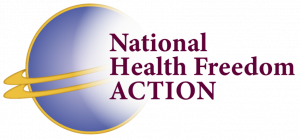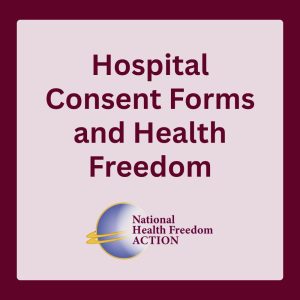
Split Decisions:
Supreme Court Halts
OSHA Vaccine Mandate, Allows
Medicare/Medicaid Worker Rule to Stand

On January 13, 2022, the US Supreme Court issued a decision to overturn support for OSHA’s large employer vaccine-or-test rule and also issued a decision to uphold Medicare/Medicaid’s healthcare worker vaccine mandate. These rulings come after a winding road through the federal trial and appeals courts, and they are not the final word. The decisions will apply until the federal appeals courts have time to go through their normal process, so it is possible these mandates will end up at the Supreme Court again in the future.
The OSHA Opinion
As to the OSHA rule, the court noted that OSHA ordered 84 million Americans to either obtain a COVID–19 vaccine or undergo weekly medical testing at their own expense. The court noted that this is no “everyday exercise of federal power.”. “It is instead a significant encroachment into the lives and health of a vast number of employees.” Many US states, businesses, and nonprofits challenged the OSHA rule in trial courts around the nation, and in their ruling the Supreme Court granted emergency relief and stayed the rule for now until further appeal court reviews.
What is an “Occupational” Risk?
According to the high court, it believes that the applicants of the lawsuit will prevail in the lower courts on the grounds that OSHA’s mandate exceeds its statutory authority and is otherwise unlawful. Using the court’s emphases, it points out that this agency is supposed to deal with “occupational safety” and ensure “safe and healthful working conditions.” Standards that it issues must be, “reasonably necessary or appropriate to provide safe or healthful employment.” Also, normally a new rule must include a process of notice, comment, and an opportunity for a public hearing. “Emergency Temporary Standards” (ETSs) are excepted from these processes, and that is the method used here. ETS’s are allowed if there is a “grave danger from exposure to” substances or agents that are “toxic or physically harmful” or from “new hazards” and further if the ETS is necessary to protect workers from the danger. In OSHA’s 50-year history, it has issued only nine of these orders, and five of them were struck down by courts, in whole or in part.
Biden’s “Blunt Instrument”
On September 9, 2021 President Biden announced a new plan, “to require more Americans to be vaccinated.” He said that the Department of Labor would issue an emergency rule requiring the vaccination or regular testing for firms with 100+ employees. After a two-month delay, the Secretary of Labor issued the ETS. The court said this regulation was a “blunt instrument” and failed to distinguish different levels of risk in different industries and workplaces: “Thus, most lifeguards and linemen face the same regulations as do medics and meatpackers.” In addition, the purported testing option is not mandatory, and employers may offer this option or not as they choose. The opinion notes that “scores” of challengers to OSHA’s rule including businesses, trade groups, and nonprofits filed petitions to the high court.
Vaccines Can’t be Undone
While dissenting justices compared OSHA’s rule to fire safety or general sanitation regulations, the majority says this mandate is “strikingly unlike” typical OSHA rules since vaccination “cannot be undone at the end of the workday.” ISt notes that administrative agencies like OSHA are “creatures of statute,” and only have the authority that Congress grants them. And “this vaccine rule is no “everyday exercise of federal power” but is instead a significant encroachment into the lives and health of vast numbers of folks. When an agency wields power of “vast economic and political significance,” Congress must have spoken clearly. Asking whether the OSH Act plainly authorizes the ETS, the court opines that, “It does not.” They note that the Act allows workplace standards and not, “broad public health measures.” The court notes that COVID-19 is everywhere and not particular to the workplace, similar to “crime, air pollution” or other contagious diseases. And if OSHA can regulate the “hazards of daily life” it “would significantly expand OSHA’s regulatory authority without clear congressional authorization.”
Rule is a “General Public Health Measure”
The high court did not rule out all OSHA mandated vaccination. They note that if COVID-19 creates a special danger due to a particular job or workplace, “targeted regulations are plainly permissible.” For example, workers who research COVID-19 or else work in a crowded environment face dangers different from the general risk of this illness than we all do. As indicated, since this mandate was so indiscriminate, it needs to be seen as a “general public health measure” and not just an “occupational” rule. And, in considering the lack of explicit congressional authorization of the rule, the court offered that the US Senate actually voted to disapprove this mandate on December 8, 2021. In its 50-year history, OSHA has never “adopted a broad public health regulation” that is “untethered, in any causal sense, from the workplace.” In ordering the mandate halted, the justices note that states and firms say implementing the rule would involve, “billions of dollars in unrecoverable compliance costs and will cause hundreds of thousands of employees to leave their jobs.” The Supreme Court’s opinion was decided by a 6 to 3 majority, with Justices Breyer, Sotomayor, and Kagan dissenting.
Medicare/Medicaid Healthcare Worker Mandate Opinion
Medicare/Medicaid Worker Mandate Survives
On that same day as the OSHA opinion, our high court issued its ruling in the Medicare/Medicaid worker mandate, with a 5 to 4 majority finding that the rule and the mission of these programs are closely related enough to justify a sweeping mandate. The Court noted that these programs are administered by the Secretary of the Health and Human Services department, and they cover “millions of elderly, disabled, and low-income Americans.” On November 11, 2021 HHS announced that federal funding would be tied to having all staff vaccinated unless they have a medical or religious exemption. And despite the fact that two trial courts had found this rule to be unlawful, here the Supreme Court decided to stay the lower court orders and allow the rule to go into effect. The Court noted that the general authority of HHS is to regulate, “as may be necessary to the efficient administration,” and this includes ensuring that providers “protect their patients’ health and safety.” The entities covered by the rule include “hospitals, nursing homes, ambulatory surgical centers, hospices, rehabilitation facilities, and more.”
35% or More Healthcare Workers Unvaccinated
The Court’s opinion stressed that Congress has authorized the Secretary to make, “requirements as [he] finds necessary in the interests of the health and safety of individuals who are furnished services in the institution.” And HHS has long insisted that providers have an “infection prevention and control program designed…to help prevent the development and transmission of communicable diseases and infections.” At many healthcare workplaces, 35% or more workers are unvaccinated, and HHS found this to be a “serious threat to the health and safety of patients” based on data showing the virus can spread quickly among healthcare workers and patients. And these patients are often “elderly, disabled, or otherwise in poor health” so that COVID-19 is particularly dangerous to them. The Secretary also found that the fear of virus exposure may be causing folks to forgo medical care. HHS created this rule as an “interim final rule,” skipping over the normal notice-and-comment process after it found good cause to impose the rule immediately, in part due to the then upcoming winter season.
Rule Fits Neatly with Legal Authority
The Medicare cases were brought by two groups of states, led by Louisiana and Missouri. Trial courts in those two states each found that the vaccine rule was “defective” and ordered it stopped. Then, two appeals courts declined to change these decisions. But the Supreme Court agreed with the federal government that the HHS rule does fall within the authority granted to it by the US Congress. Specifically, the Secretary is authorized to impose conditions on the receipt of Medicare/Medicaid funds which he, “finds necessary in the interest of the health and safety of individuals who are furnished services.” And COVID-19 is highly contagious and a special danger to these vulnerable patients. HHS found that vaccination will substantially reduce the spread of the virus to participants. “The rule thus fits neatly within the language of the statute,” offered the high court. It is a longtime practice of HHS that facilities which want to participate in Medicare or Medicaid must meet conditions, “that address safe and effective provision of medical care….” The underlying regulations require the, “surveillance, prevention, and control of…infectious diseases.” And even though the rule at issue goes beyond prior HHS actions, they “never had to address an infection problem of this scale and scope before.”
A Narrow Victory for Government
The Supreme Court decision on the Medicare/Medicaid case was 5 to 4 as noted, and the dissenters included Justices Thomas, Alito, Gorsuch, and Barrett. Thomas noted that the majority of the court was cobbling together various statutes and regulations in a way that concealed the lack of authority for the Medicare rule, and Alito said that the failure to give notice and seek public comment for such a sweeping measure should itself put the mandate into doubt.
Health Freedom Going Forward
Under our legal system, the Supreme Court has the final say in disputes over the legitimacy of federal power and federal actions. We should celebrate that the court ruled against OSHA: this is a win for individual rights and health freedom. On the other hand, while most experts expected the HHS Medicare/Medicaid rules to be upheld, the court’s action means that massive numbers of healthcare workers face the untenable choice between surviving financially and making health care decisions for themselves. Going forward, our movement should make use of the OSHA ruling as a defense to federal overreach, while also recognizing the urgent need for continued advocacy, legislation, and litigation regarding our health freedom!
RECENT NEWS


Top Health Freedom Highlights of 2025
December 11, 2025

Hospital Consent Forms and Health Freedom
December 4, 2025

